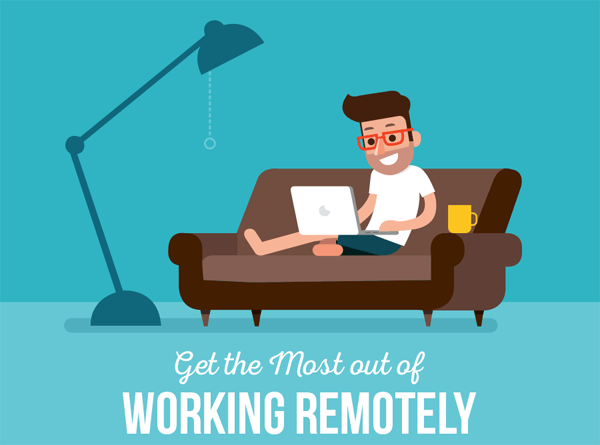![Get-the-Most-Out-of-Remote-Working-infographic-plaza]()
![Get the Most out of Working Remotely Get-the-Most-Out-of-Remote-Working-infographic-plaza-thumb]()
More than 1 in 3 employees now avail of flexible or remote working arrangements, compared to fewer than 1 in 10 in the mid-1990s. It is now common practice for employees to work from home or indeed from any location, owing to advances in technology and substantial shifts in the perception of professional norms.
Remote working can prove to be highly beneficial for all parties in a telecommuting arrangement.
The advent of work-related technologies such as Skype and Google Docs makes it easier than ever to keep in touch and share progress while out of the office. Also, in this environmentally-conscious era, many people prefer to work from home so that they don’t contribute to the emissions produced by heavy traffic jams.
However, working remotely does require a level of trust between management and staff, while it takes a self-disciplined employee to stick to their normal working routine without the constant presence of their superiors on their neck.
![Get the Most out of Working Remotely Get-the-Most-Out-of-Remote-Working-infographic-plaza]()
Source:
https://www.ayers.com.au/corporate/hr-solutions/

 More than 1 in 3 employees now avail of flexible or remote working arrangements, compared to fewer than 1 in 10 in the mid-1990s. It is now common practice for employees to work from home or indeed from any location, owing to advances in technology and substantial shifts in the perception of professional norms. Remote working can prove to be highly beneficial for all parties in a telecommuting arrangement.
The advent of work-related technologies such as Skype and Google Docs makes it easier than ever to keep in touch and share progress while out of the office. Also, in this environmentally-conscious era, many people prefer to work from home so that they don’t contribute to the emissions produced by heavy traffic jams.
However, working remotely does require a level of trust between management and staff, while it takes a self-disciplined employee to stick to their normal working routine without the constant presence of their superiors on their neck.
More than 1 in 3 employees now avail of flexible or remote working arrangements, compared to fewer than 1 in 10 in the mid-1990s. It is now common practice for employees to work from home or indeed from any location, owing to advances in technology and substantial shifts in the perception of professional norms. Remote working can prove to be highly beneficial for all parties in a telecommuting arrangement.
The advent of work-related technologies such as Skype and Google Docs makes it easier than ever to keep in touch and share progress while out of the office. Also, in this environmentally-conscious era, many people prefer to work from home so that they don’t contribute to the emissions produced by heavy traffic jams.
However, working remotely does require a level of trust between management and staff, while it takes a self-disciplined employee to stick to their normal working routine without the constant presence of their superiors on their neck.
 Source: https://www.ayers.com.au/corporate/hr-solutions/
Source: https://www.ayers.com.au/corporate/hr-solutions/



















